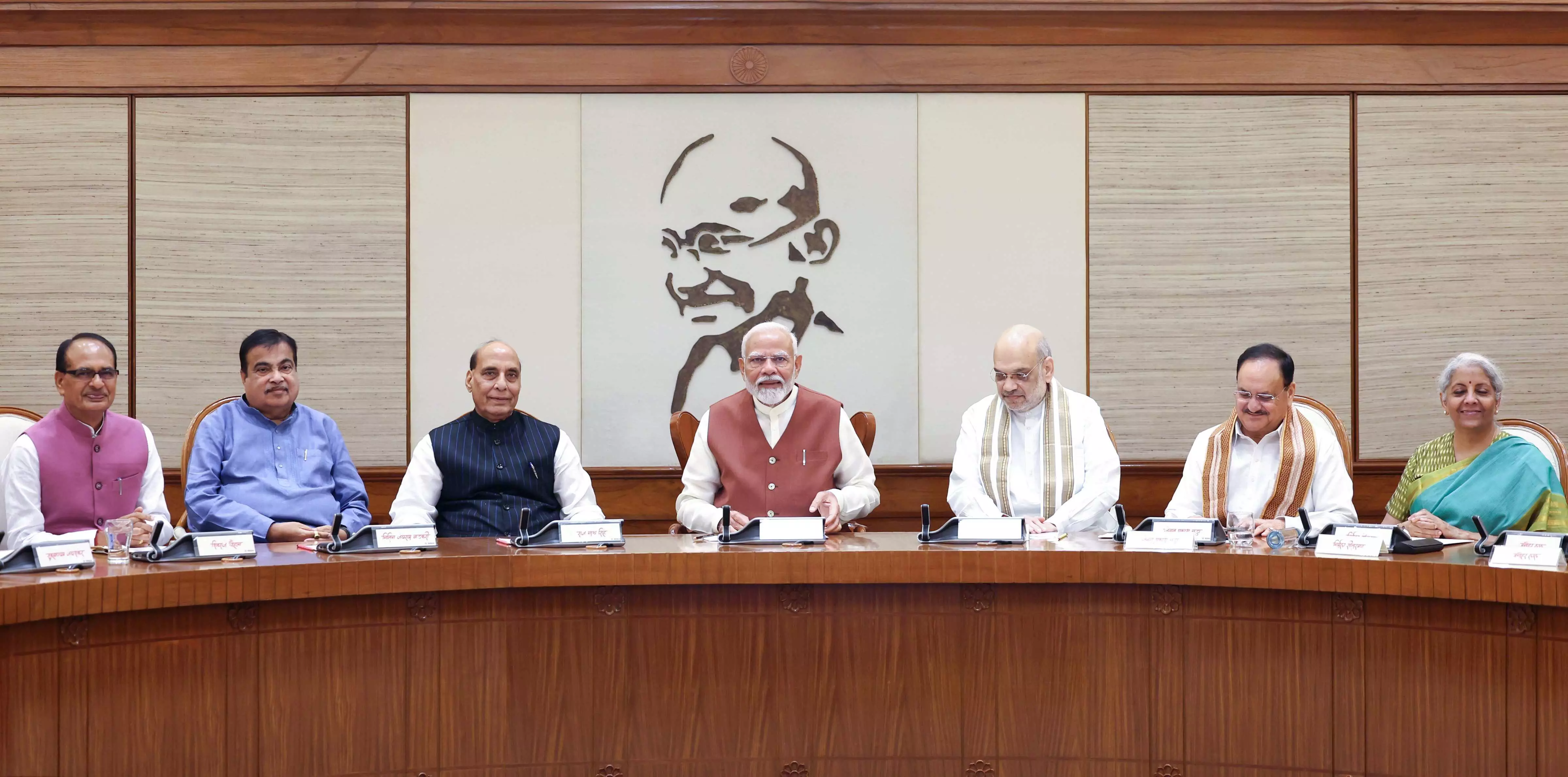Compulsive continuity

As the Cabinet of the new NDA government was in the process of being formed, anticipations were high that coalition partners will get a considerable share in the power pie. This anticipation materialised, albeit partly, with a bigger Cabinet in place. However, following the Cabinet formation, National Conference Chief Omar Abdullah minced no words in saying that the coalition partners “obviously don't have much sway in the corridors of power.” Indeed, they have been accorded more prominence than the previous two terms of NDA, but that was almost certain, given that the BJP has lost its majority in the House. Nevertheless, many political analysts have already heralded the resurgence of coalition politics in India. Needless to say there will be greater checks and balances within the NDA camp, but the Telugu Desam Party (TDP) and the Janata Dal United (JDU) could have pressed for a better bargain.
Incorporating coalition partners, however, was not the only compulsion of the BJP. The party had taken away the chief ministership of certain political stalwarts after the recent state assembly polls. The party was more or less bound to give them a position in the Cabinet. Apart from former CMs Rajnath Singh and Sarbanand Sonowal, HD Kumaraswamy, Shivraj Singh Chouhan and Manohar Lal Khattar have also been accommodated in the Cabinet. Under the leadership of Shivraj Singh Chouhan, despite facing a strong anti-incumbency, the BJP had won a staggering 163 seats in 230-seat Madhya Pradesh Assembly. This goes on to show Chouhan’s clout in Madhya Pradesh’s politics. Even in the Lok Sabha elections, the BJP swept Madhya Pradesh by winning all the 29 seats. After having lost the chief ministership, Chouhan’s promotion in the Central Cabinet almost had an element of inevitability; he has been given the Ministry of Agriculture and Farmers Welfare, along with the Ministry of Rural Development. Manohar Lal Khattar, who lost his chief ministership to Nayab Singh Saini in Haryana, has been given the Ministry of Housing and Urban Affairs (formerly with Hardeep Singh Puri) and the Ministry of Power. HD Kumaraswamy has been trusted with the Ministry of Steel and Ministry of Heavy Industries.
In terms of political messaging, the BJP has been very clear and concise: it has, in a way, asserted the effectiveness of the performance of the previous government on major fronts. The composition of the Cabinet Committee on Security (CCS) has been kept unchanged. The core ministries, i.e., Ministry of Home, Ministry of Defence, Ministry of Finance, and Ministry of External Affairs, have been retained by Amit Shah, Rajnath Singh, Nirmala Sitharaman, and S Jaishankar, respectively. The NDA’s satisfaction with the performance of these ministries provides a glimpse of continuity in important policy matters in the third term. Credit to his impressive track record, Nitin Gadkari has also retained the Ministry of Road Transport and Highways. Another notable message reflected from the new Cabinet is that the saffron party may be unrelenting in its Hindutva approach, as no Muslims have been included in the Council of Ministers. In fact, there has been a stark absence of NDA MPs belonging to Sikh, Muslim or Christian communities.
Notably, despite a loss of majority in the Lok Sabha, the BJP has brought back Jagat Prakash Nadda as the Minister of Health and Family Welfare. This is in line with BJP’s politics of rewarding top-performing and loyalist politicians who have risen through the party structure. However, one can also see a sort of deviation in BJP’s approach of maintaining the core of RSS and ABVP. Political analysts have pointed out that of the 30 Cabinet ministers, only 15 are from RSS or ABVP.
Of course, the two big omissions from the Cabinet cannot be missed out in discussion — Smriti Irani and Anurag Thakur. While Smriti Irani had dramatically lost the Amethi seat, Anurag Thakur — one of the most visible ministers of Modi 2.0 — won from Hamirpur seat. Perhaps the BJP could not accommodate both the Himachal leaders, JP Nadda and Anurag Thakur. Consequently, the Ministry of Information and Broadcasting now rests with Aswani Vaishnav who has also retained the Ministry of Railways and the Ministry of Electronics and Information Technology. The Ministry of Women and Child Development, previously held by Smriti Irani, is now with Annapurna Devi from Kodarma, who was the Minister of State for Education in Modi 2.0.



